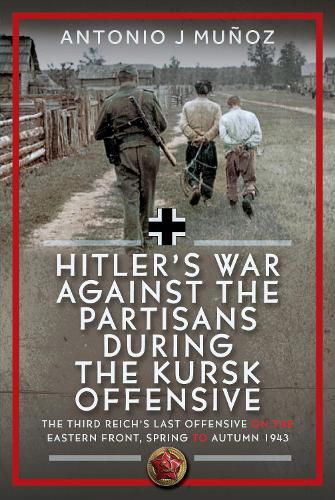Readings Newsletter
Become a Readings Member to make your shopping experience even easier.
Sign in or sign up for free!
You’re not far away from qualifying for FREE standard shipping within Australia
You’ve qualified for FREE standard shipping within Australia
The cart is loading…






By the summer of 1943, the Soviet partisan forces had grown from small, disorganized groups into a formidable fighting force. Hitler, still holding some advantages, hoped to crush a Red Army salient near Kursk and shorten the front lines with a localized offensive. However, the Soviets anticipated the attack and built extensive defense lines to thwart it, employing large numbers of partisans to disrupt German preparations. The critical period of 1943 saw intense fighting behind German lines, particularly during the "Battle for the Rails" in July and August. Stalin's partisans worked relentlessly to block the flow of German supplies and troops, forcing the Germans to contend with a growing insurgency. Dr. Antonio J. Munoz's book examines these guerrilla operations, using German maps to detail partisan movements and the German response, which included increasing anti-partisan operations. The year 1943 marked a turning point in the war on the Eastern Front. While Stalingrad in 1942 revealed Germany's inability to win in Russia, the failed Battle of Kursk in 1943 demonstrated the inevitable loss of the war. The partisan efforts were so successful that, by August 1943, only 80% of the trains carrying supplies reached Army Group Centre's front lines. AUTHOR: Antonio J. Munoz is a retired professor of history living in New York city. He joined the United States Marine Corps right after graduating from high school. He served honorably for four years, two of them with the Fleet Marine Force Atlantic. He obtained his bachelor's and master's degree in history from Queens College. He later attended St. John's University, where he received a doctorate in history. Before he retired, he taught at St. John's University and, later, at Farmingdale State College. Dr. Munoz has previously been published. His study - The German Secret Field Police in Greece, 1941-1944 - was released in 2018. He has been married for forty-three years and has several grandchildren. His family in Spain hails from the province of Asturias while his wife's family is from Galicia. He and his family hold dual American and Spanish citizenship. 16 b/w illustrations
$9.00 standard shipping within Australia
FREE standard shipping within Australia for orders over $100.00
Express & International shipping calculated at checkout
By the summer of 1943, the Soviet partisan forces had grown from small, disorganized groups into a formidable fighting force. Hitler, still holding some advantages, hoped to crush a Red Army salient near Kursk and shorten the front lines with a localized offensive. However, the Soviets anticipated the attack and built extensive defense lines to thwart it, employing large numbers of partisans to disrupt German preparations. The critical period of 1943 saw intense fighting behind German lines, particularly during the "Battle for the Rails" in July and August. Stalin's partisans worked relentlessly to block the flow of German supplies and troops, forcing the Germans to contend with a growing insurgency. Dr. Antonio J. Munoz's book examines these guerrilla operations, using German maps to detail partisan movements and the German response, which included increasing anti-partisan operations. The year 1943 marked a turning point in the war on the Eastern Front. While Stalingrad in 1942 revealed Germany's inability to win in Russia, the failed Battle of Kursk in 1943 demonstrated the inevitable loss of the war. The partisan efforts were so successful that, by August 1943, only 80% of the trains carrying supplies reached Army Group Centre's front lines. AUTHOR: Antonio J. Munoz is a retired professor of history living in New York city. He joined the United States Marine Corps right after graduating from high school. He served honorably for four years, two of them with the Fleet Marine Force Atlantic. He obtained his bachelor's and master's degree in history from Queens College. He later attended St. John's University, where he received a doctorate in history. Before he retired, he taught at St. John's University and, later, at Farmingdale State College. Dr. Munoz has previously been published. His study - The German Secret Field Police in Greece, 1941-1944 - was released in 2018. He has been married for forty-three years and has several grandchildren. His family in Spain hails from the province of Asturias while his wife's family is from Galicia. He and his family hold dual American and Spanish citizenship. 16 b/w illustrations